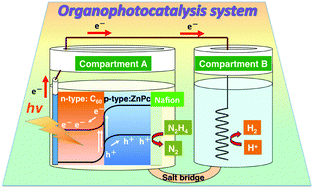Decomposition of hydrazine by an organic fullerene–phthalocyanine p–n bilayer photocatalysis system over the entire visible-light region†
Abstract
An organic p–n bilayer photocatalysis system successfully induced the oxidative decomposition of hydrazine (N2H4) into N2 and simultaneously yielded H2 from H+. This demonstrates the first instance of the stoichiometric decomposition of N2H4 under visible-light irradiation.


 Please wait while we load your content...
Please wait while we load your content...